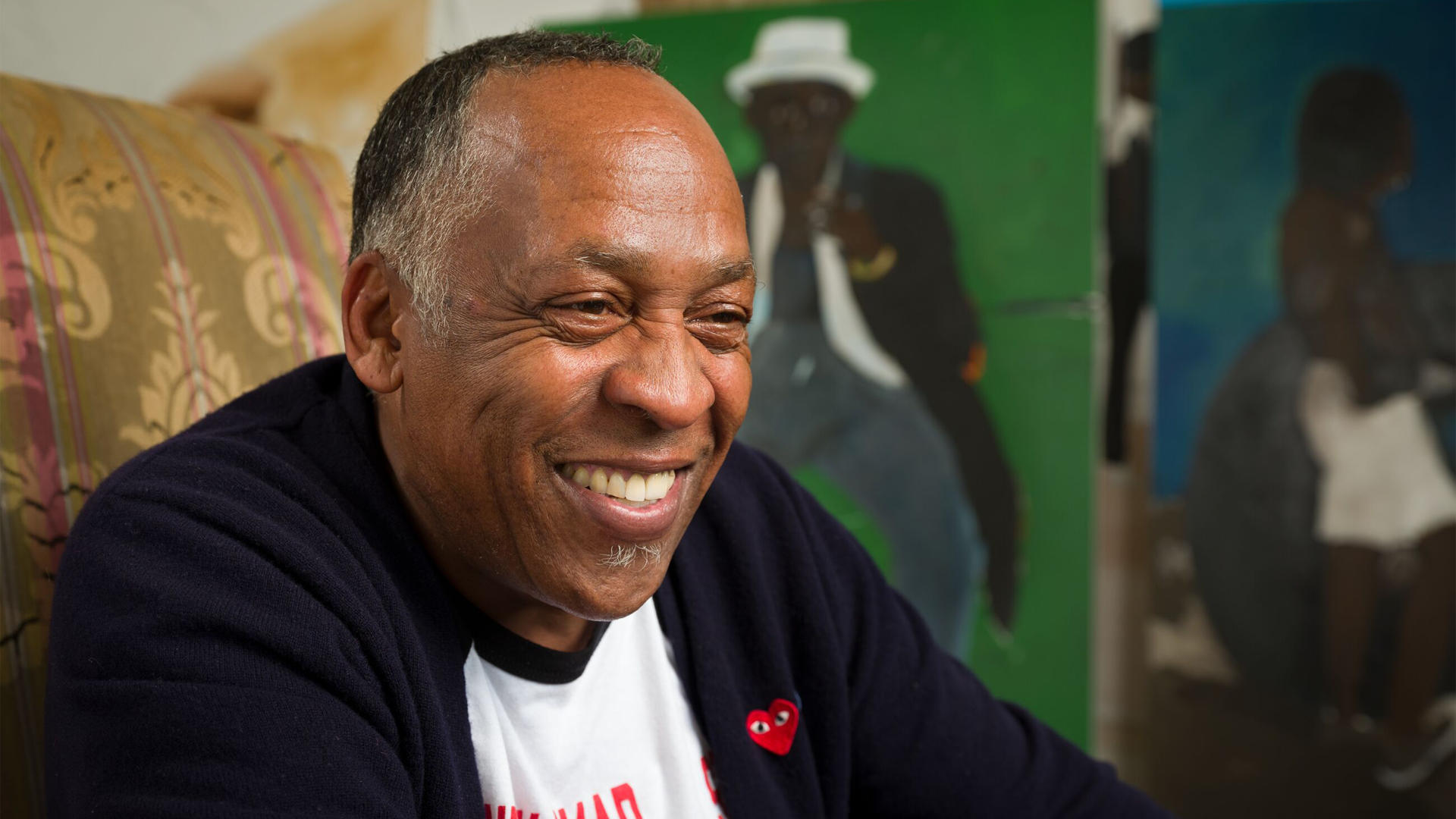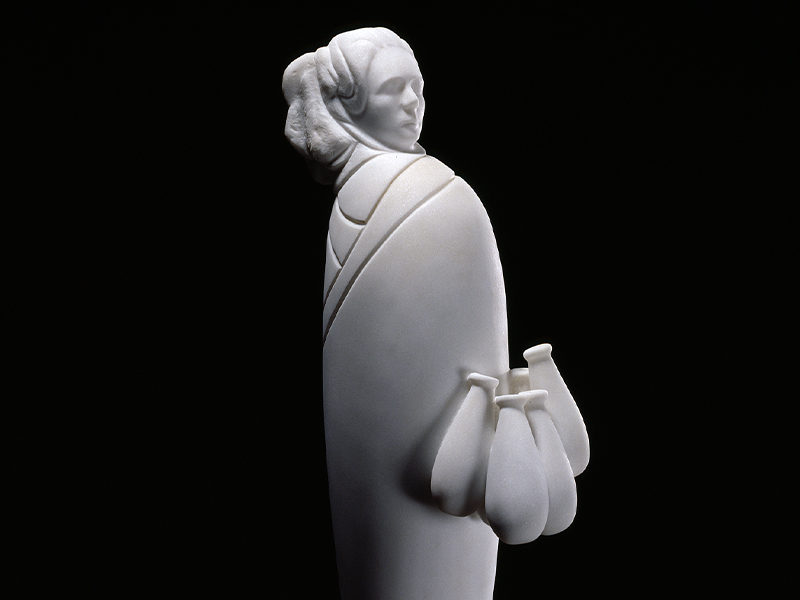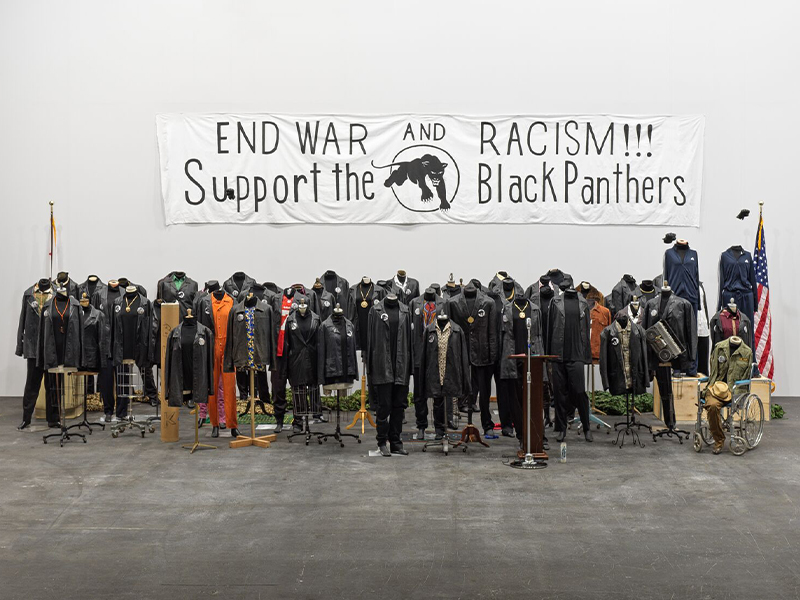1 / 4
Henry Taylor
Untitled
- 2022
- Mixed media
- Installation dimensions variable
First exhibited in ‘Henry Taylor: B Side,’ a major survey exhibition at the Museum of Contemporary Art, Los Angeles in 2022 that travelled to The Whitney Museum of American Art the following year, ‘Untitled’ (2022) is a poignant, large-scale installation. It comprises 35 life-size, headless mannequins, configured as a meeting of the 20th-century American political organization, the Black Panthers. Behind them hangs a banner emblazoned with ‘END WAR AND RACISM!!! Support the Black Panthers,’ while several black leather gloves float above them, raised in ghostly fists of solidarity. Pinned to the mannequins’ black leather jackets—some worn over the black turtlenecks typical of Black Panther Party members, others over more contemporary attire (including civil rights activist and former football player Colin Kaepernick’s San Francisco 49ers jersey)—are badges printed with the Black Panther logo and with photographs of victims who were murdered by law enforcement in the more recent past.
Taylor’s vast body of highly personal work is rooted in the people and communities closest to him, often manifested together with poignant historical or pop-cultural references. Voracious in his sourcing of subjects, Taylor draws from art history, newspaper clippings, personal memories and encounters with family, friends and strangers—a process the artist describes as ‘hunting and gathering.’ Though best known for his portraits—sumptuous depictions of live sitters and archival figures, painted quickly and loosely, that deftly capture his subjects’ nuances and moods—sculpture and installation play an important part in Taylor’s practice, with ‘Untitled’ an impressive example of his work in three dimensions.
‘You see things, we all grow up with things, and we don’t forget, even if we try to suppress that memory.’
Henry Taylor

About the artist
Henry Taylor’s imprint on the American cultural landscape comes from his disruption of tradition. While people figure prominently in Taylor’s work, he rejects the label of portraitist. Taylor’s chosen subjects are only one piece of the larger cultural narrative that they represent: his paintings reveal the forces at play, both individualistic and societal, that come to bear on his subject. The end result is not a mere idealized image, but a complete narrative of a person and his history. Taylor explains this pursuit of representational truth: ‘It’s about respect, because I respect these people. It’s a two-dimensional surface, but they are really three-dimensional beings.’
Photo: Fredrik Nilsen






